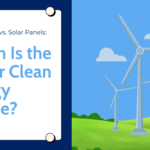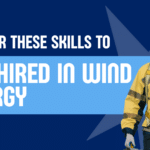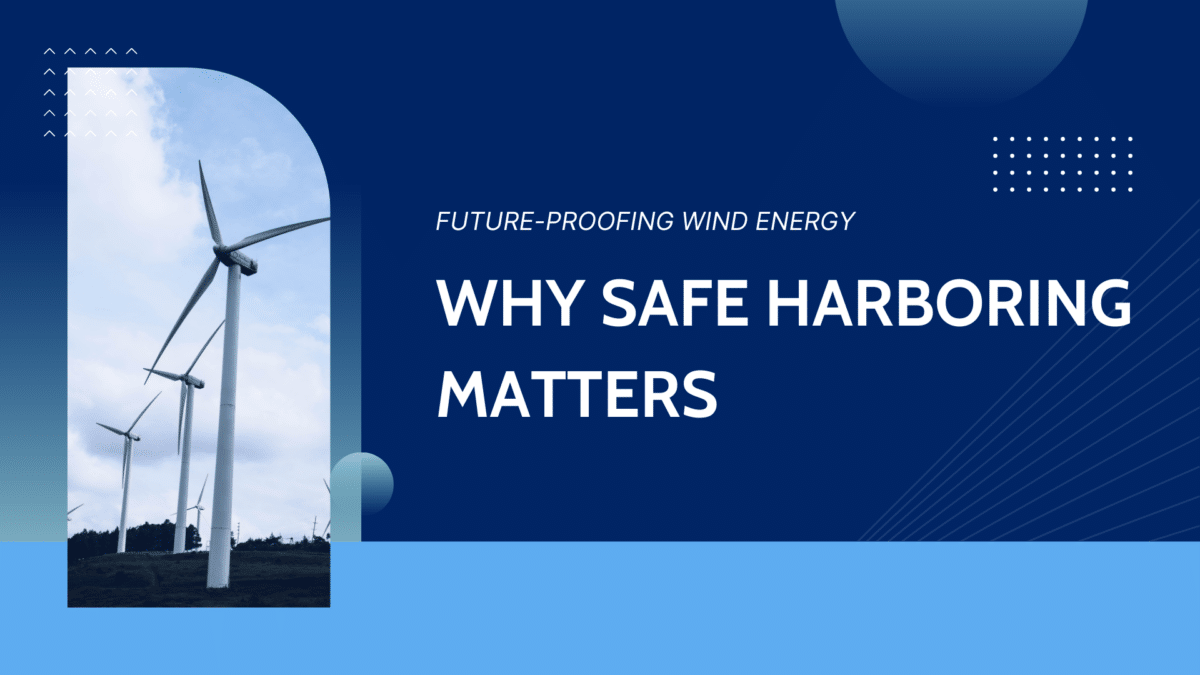
Wind Energy vs. Solar: Which is the Better Renewable Source?
April 7, 2025
Top Skills Employers Look For in Wind Turbine Technicians
June 3, 2025As the world shifts toward cleaner energy futures, offshore wind farms are becoming a cornerstone in efforts to reduce carbon emissions and move away from natural gas. These massive projects play a crucial role in generating electricity sustainably, but developing them isn’t without its challenges. From supply chain delays to shifting policies, wind developers are finding ways to stay ahead—one of the most effective being safe harboring.
Safe harboring refers to early investment in wind components to meet IRS guidelines and lock in credit amounts like the Production Tax Credit (PTC) or Investment Tax Credit (ITC). By doing so, developers can start work on an offshore wind project while protecting it from policy changes or rising material costs.

Why Safe Harboring Matters for Offshore Wind
In an industry heavily influenced by policy and procurement timelines, safe harboring gives developers a strategic advantage. When properly managed, it can offer a variety of benefits, particularly for large-scale offshore wind turbine installations:
Lock in Tax Incentives
The Department of Energy provides guidance on how wind energy developers can qualify for federal tax credits. By investing early and storing key components—such as blades, towers, or nacelles—developers demonstrate project initiation and qualify for full credit amounts. This is vital in an unpredictable regulatory environment.
Secure the Supply Chain
Safe harboring helps mitigate the effects of global supply chain disruptions. Early procurement and storage of turbine parts mean fewer delays down the road, especially for remote offshore wind farms where logistics are more complex. A well-planned storage system ensures that parts are protected, tracked, and ready when construction begins.
Reduce Costs
Purchasing components before demand spikes or prices rise helps stabilize project budgets. This is particularly useful for managing operations and maintenance expenses over time, giving developers more control over their investments.
Supporting the Electricity System
As offshore wind farms become more prevalent, their role in the electricity system grows. Safe harboring strategies can help projects come online faster, improving the overall integration of renewable sources into the electrical grid. Faster deployment also means less reliance on natural gas and other fossil fuels, accelerating the transition to cleaner energy.

Considerations for Effective Storage
Safe harboring isn’t just about buying parts—it’s also about storing them properly. Large-scale components require specific planning:
- Climate-protected facilities to avoid weather damage
- Advanced inventory systems to track parts over time
- Insurance coverage for theft, natural disasters, or transit risks
These steps are essential for maintaining component integrity and ensuring successful deployment.
Local and Economic Benefits
Accelerating offshore wind project timelines through safe harboring also benefits local communities. As more projects stay on schedule, they generate long-term economic benefits through job creation, infrastructure development, and investments in operations and maintenance teams. Additionally, wind power helps reduce the environmental impacts typically associated with fossil fuel-based energy production.

Preparing for a Wind-Driven Future
The U.S. has already invested in renewable energy at scale, but staying competitive in the global market will require continuous innovation. By adopting safe harboring practices, developers can build flexibility into their project timelines while helping the nation meet its clean energy goals.
Additionally, leveraging data on wind speed and weather conditions helps developers select ideal locations for new projects, maximizing power output and minimizing risk.
Moving Forward with Confidence
Safe harboring through early investment and storage is more than a compliance tactic—it’s a strategic decision. It helps developers reduce risk, protect capital, and keep projects viable through unpredictable policy and market changes.
As the demand for wind energy grows and the push for renewable infrastructure expands, adopting forward-thinking approaches like safe harboring will be critical. By preparing today, wind developers can secure a more stable, cost-effective, and resilient future for their projects.

